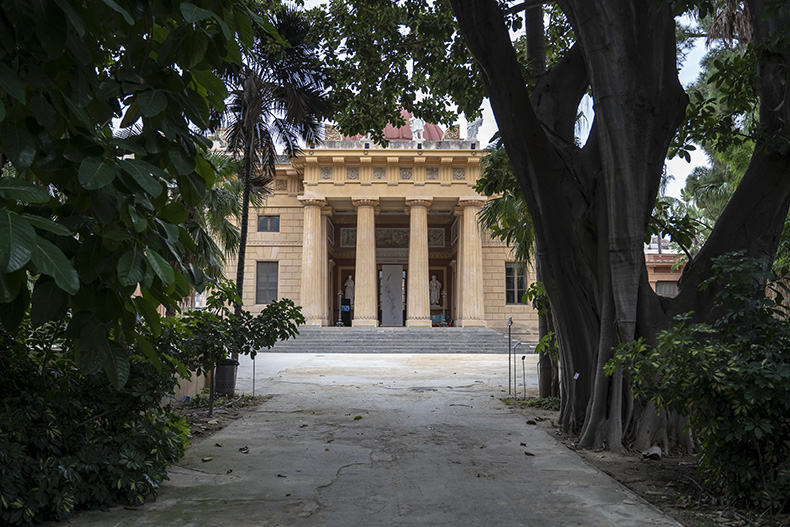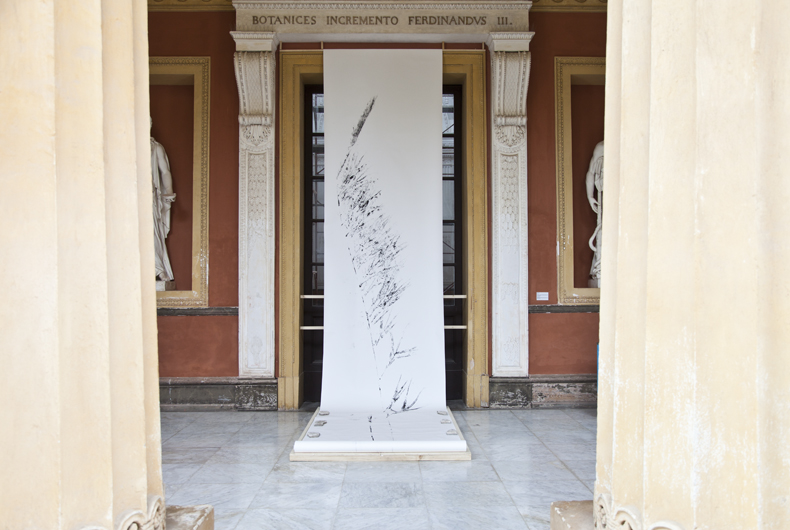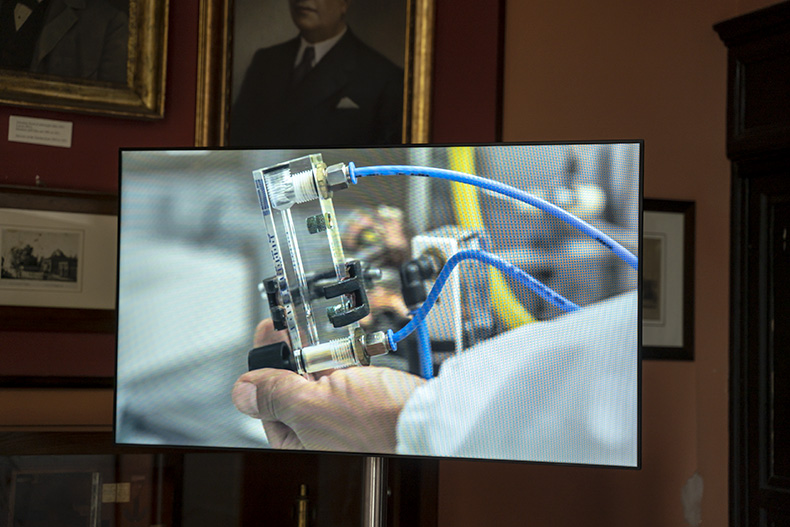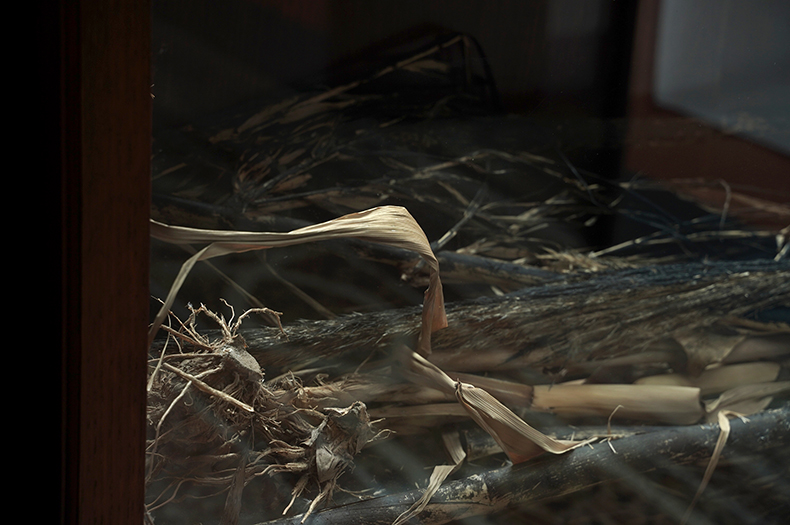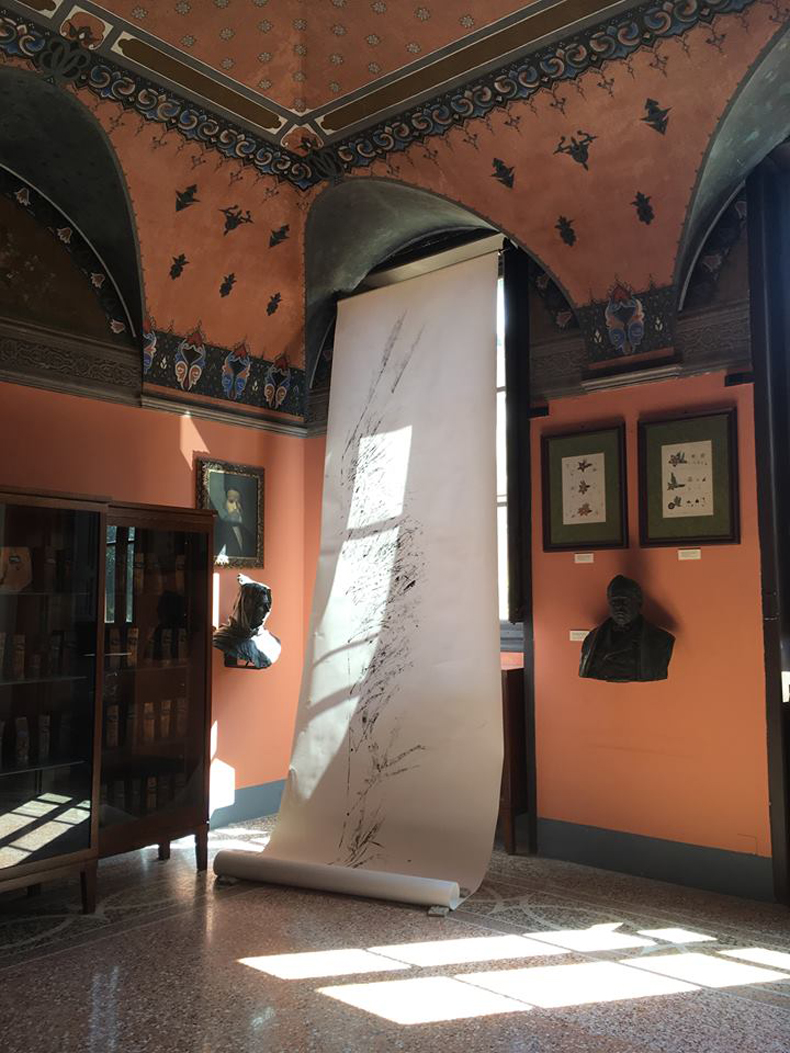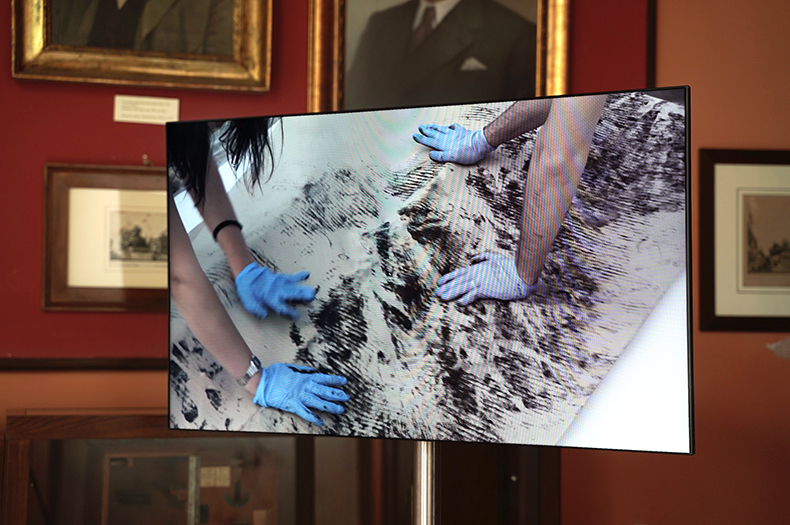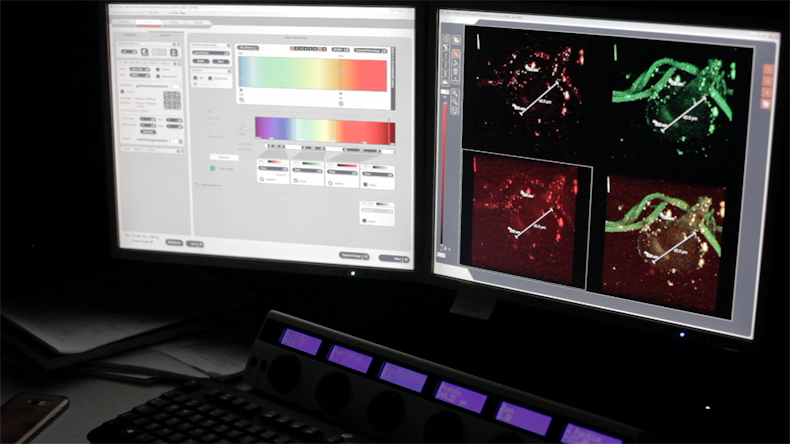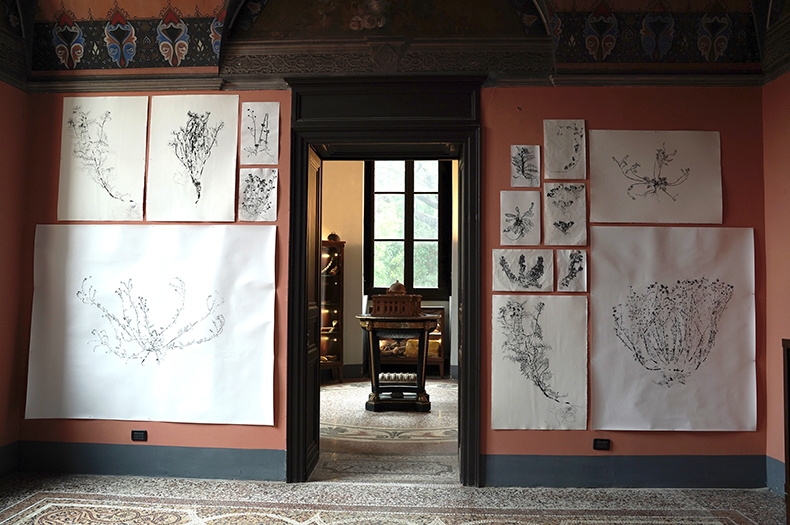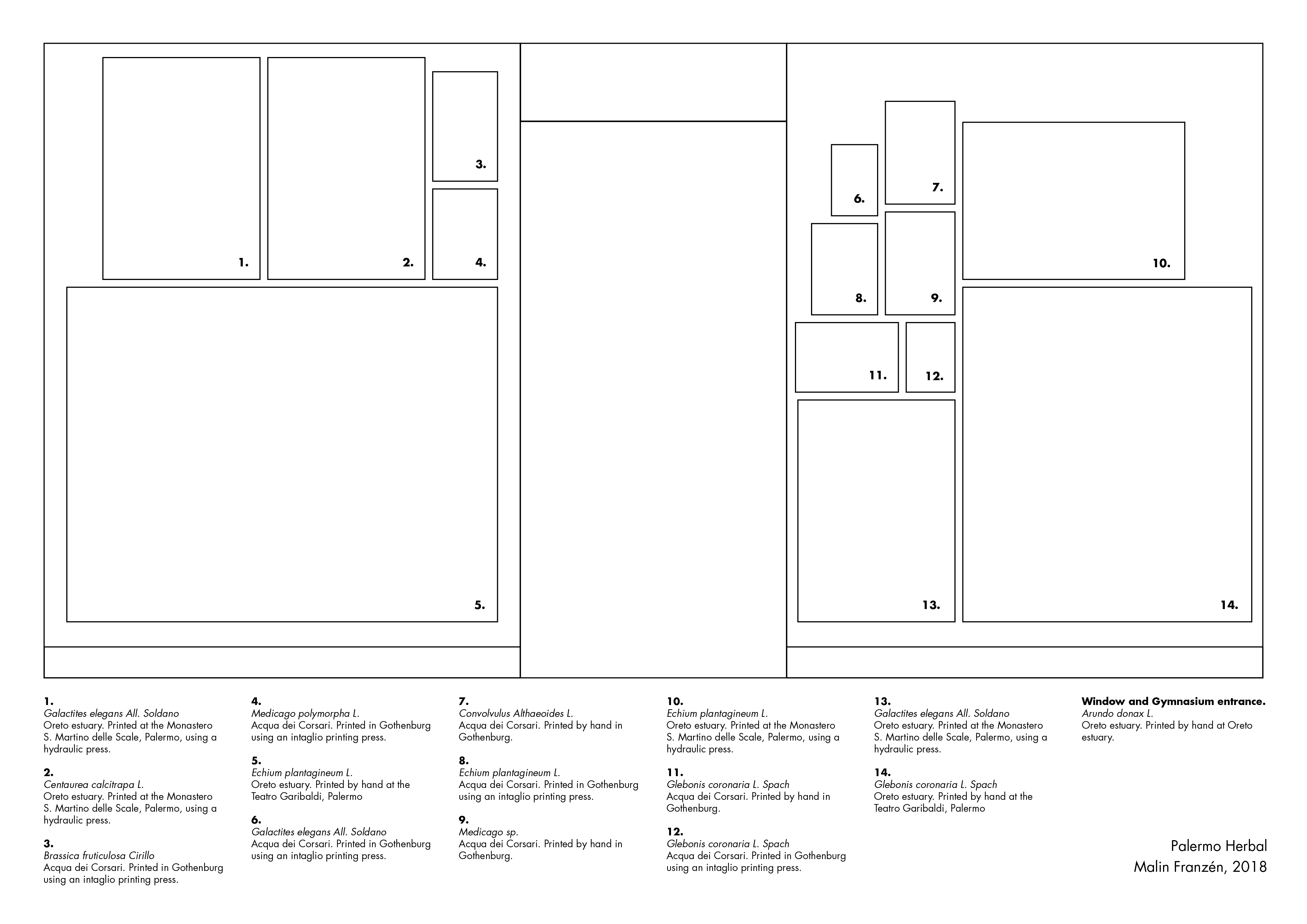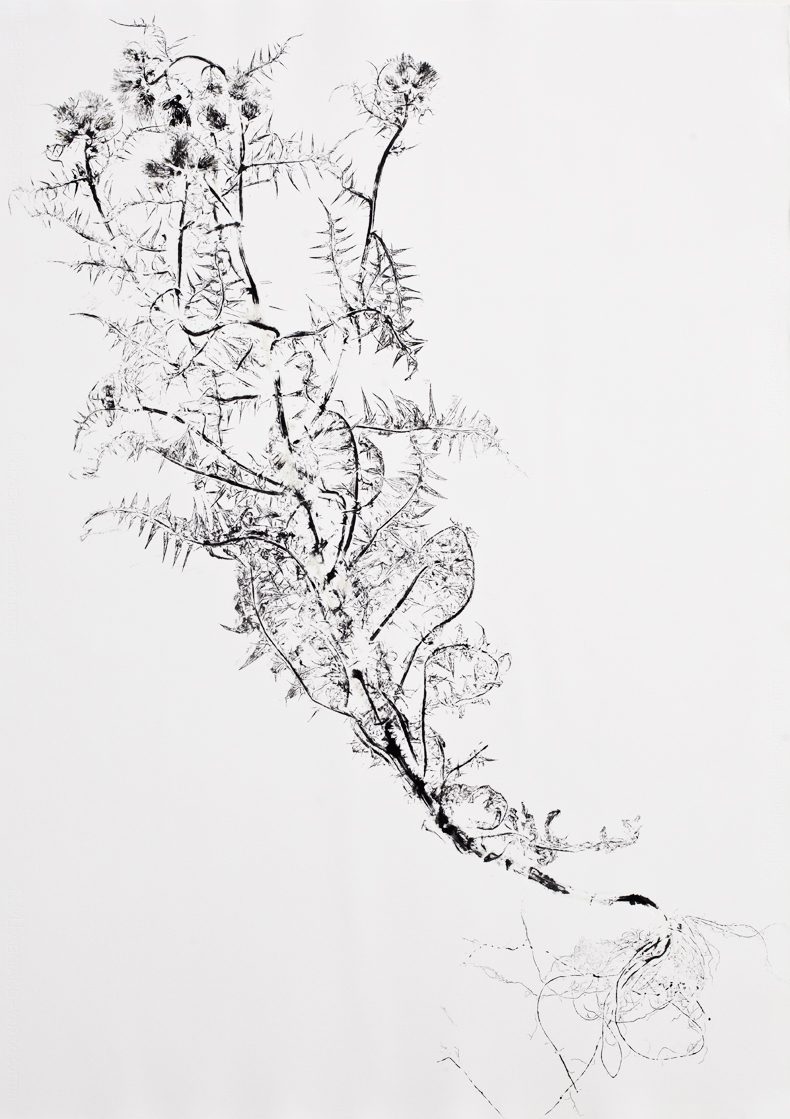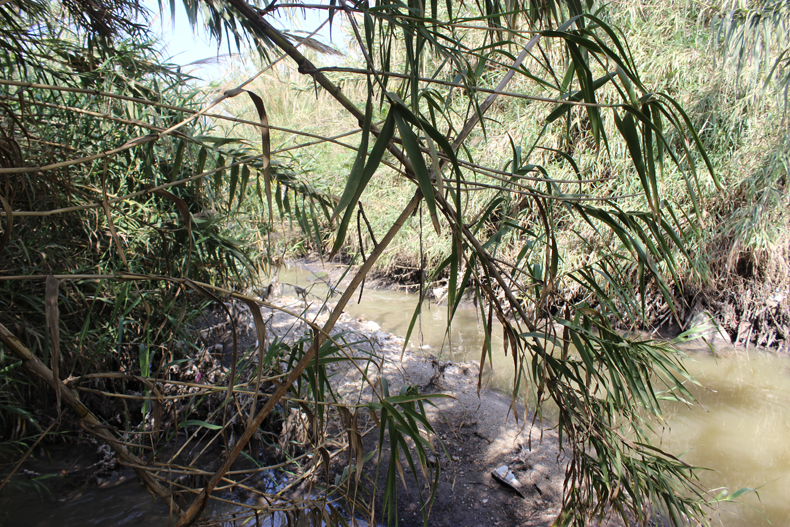Palermo Herbal Palermos Örtabok
Installation, 2018
Nature prints, plants, HD video with sound 17:20 min
Commissioned by Manifesta 12 with the support of Iaspis and The Swedish Arts Grants Committee
In collaboration with: Karl Malmqvist, Marco Di Bella (Associazione Culturale Mali Caratteri), Alfredo Caratello, Giuseppe Certa (Orto Botanico di Palermo), Valeria Vetri, Claudio de Pasquale, Salvatore Guarino (Università degli Studi di Palermo), Don Mariano Colletta OSB, Ignazio Putano, Clara di Blasi (Abbazia di S.Martino delle Scale di Palermo), Caterina Trapani, Ombretta Zora
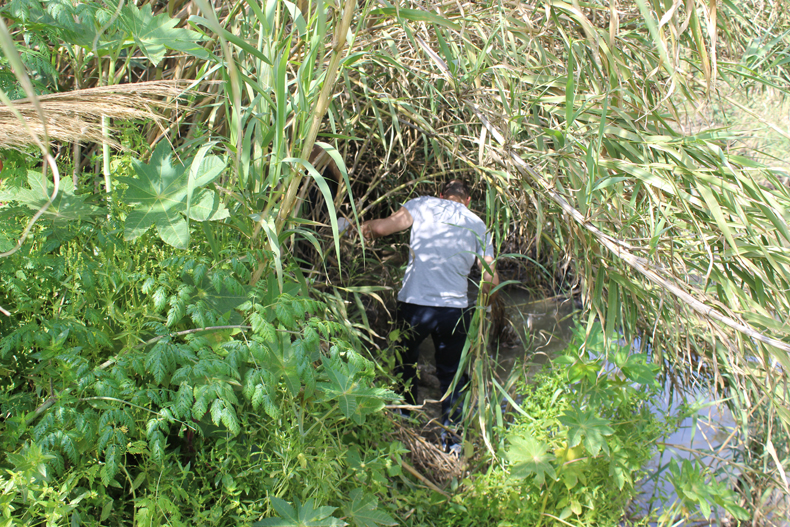
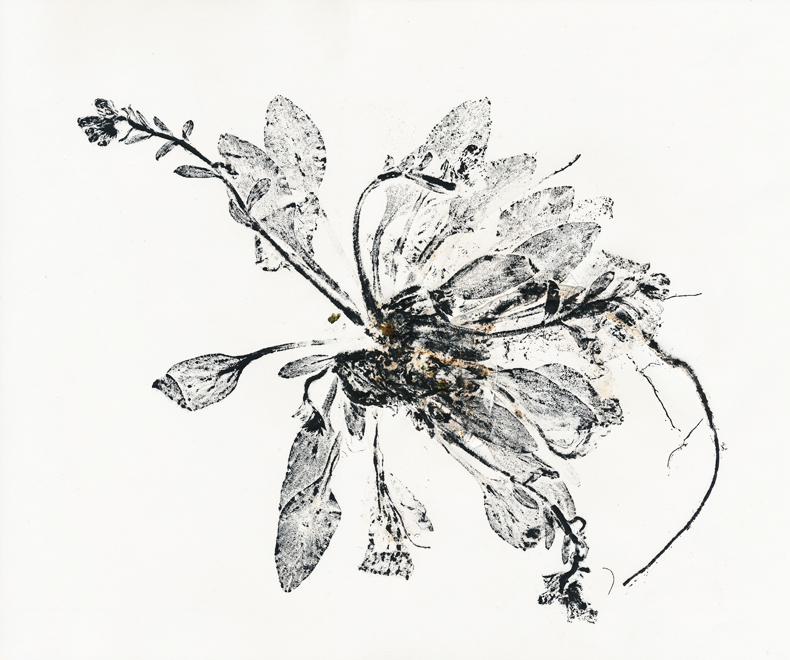
The Sicilian botanist Paolo Boccone (1633-1704) used a specific method of colouring pressed plant specimens and printing them directly onto paper, a procedure known as nature printing. As a botanist, Boccone had a particular interest in plants containing toxins that might be medically useful. His work took him on a reverse grand tour to northern Europe, where most of his nature prints are still to be found. Boccone’s early work on the uses of toxic plants can be connected to contemporary toxicological research on how ecosystems are affected by pollution, such as research on phytoremediation, which focuses on some plants’ abilities to detoxify contaminated soil and water. Phragmite Australis, or common reed, a plant often used in phytoremediation, has also been used as medicine, food and building material throughout history. At the same time, it is classified as invasive and is one of the world’s most widely spread flowering plants. In Palermo Herbal, Malin Franzén juxtaposes Boccone’s method of nature printing with contemporary scientific visualisation techniques to represent plants that coexist with toxicity, including phragmites and other plants collected at the estuary of the Oreto river and in the abandoned Parco Acqua dei Corsari in Palermo.
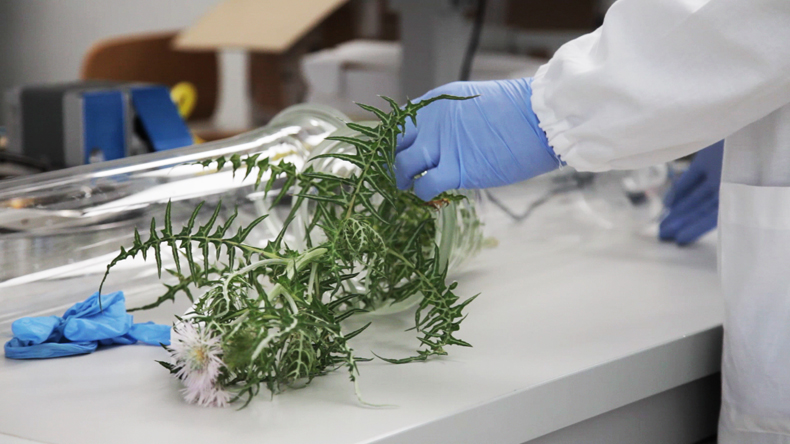
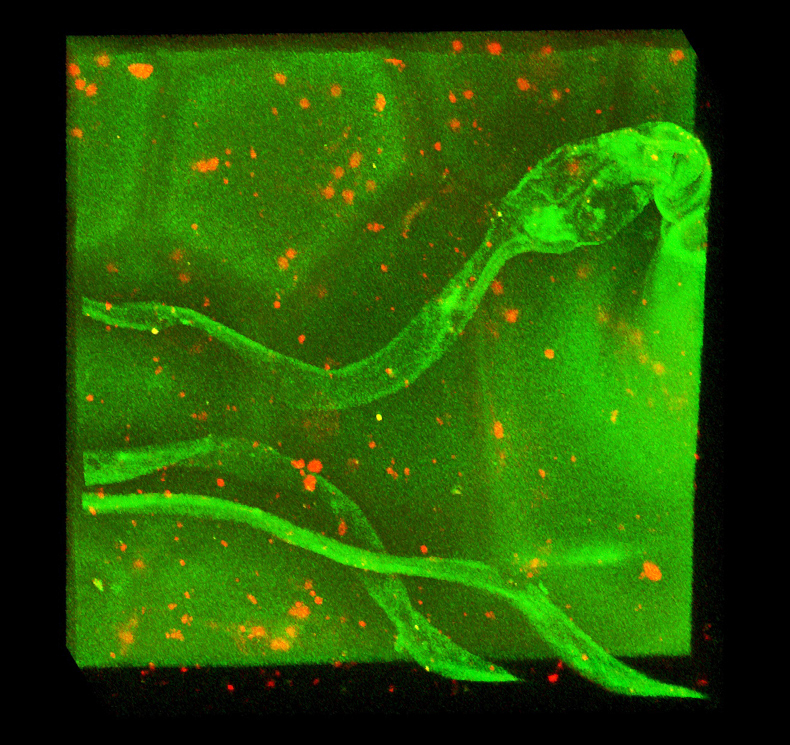
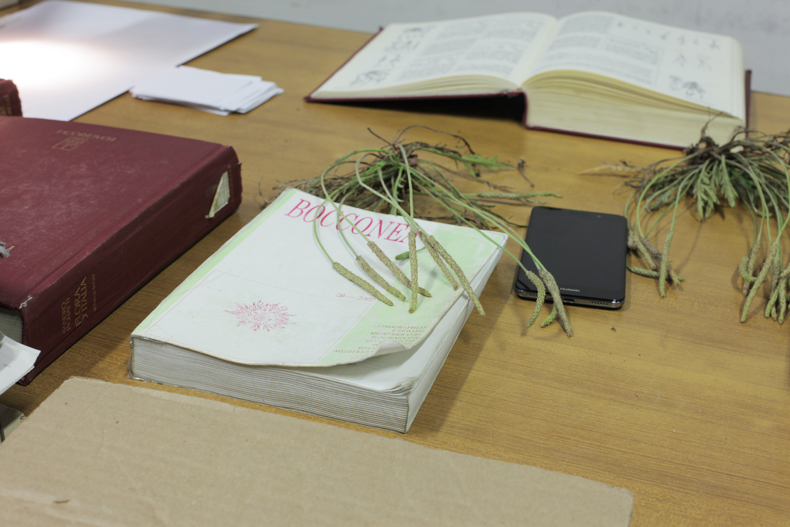
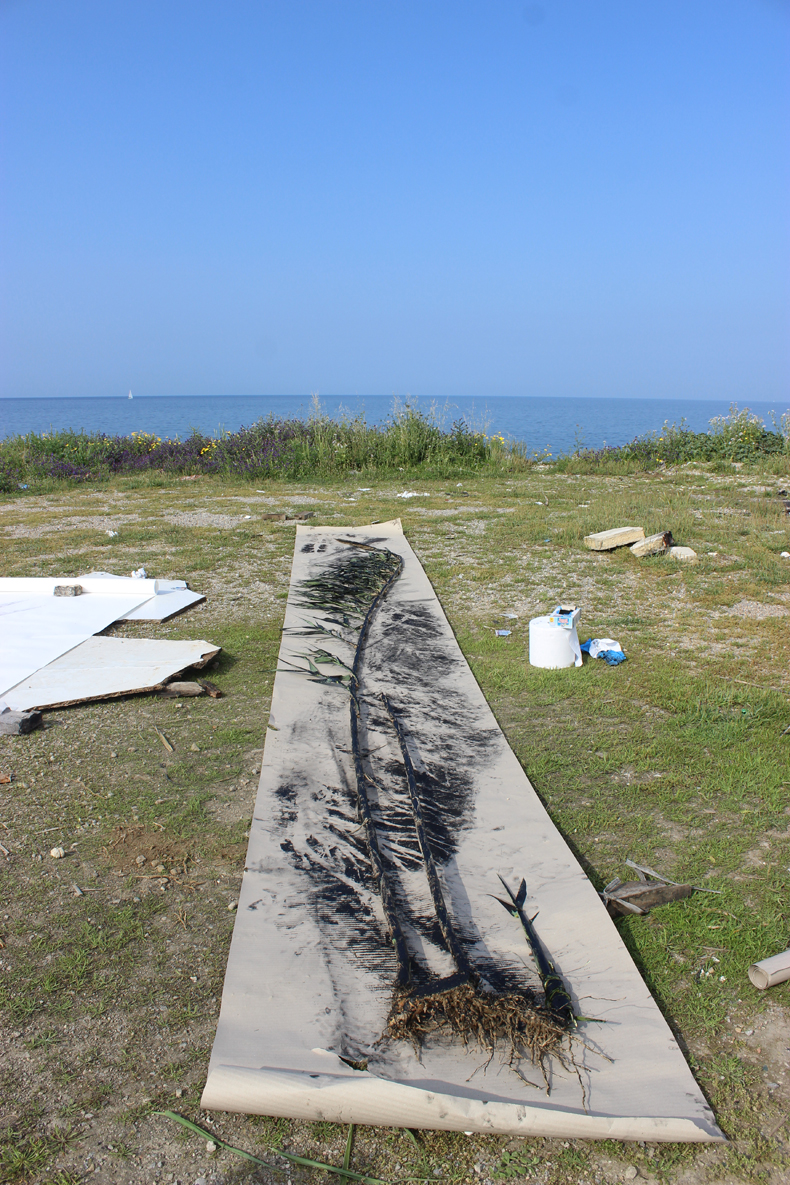
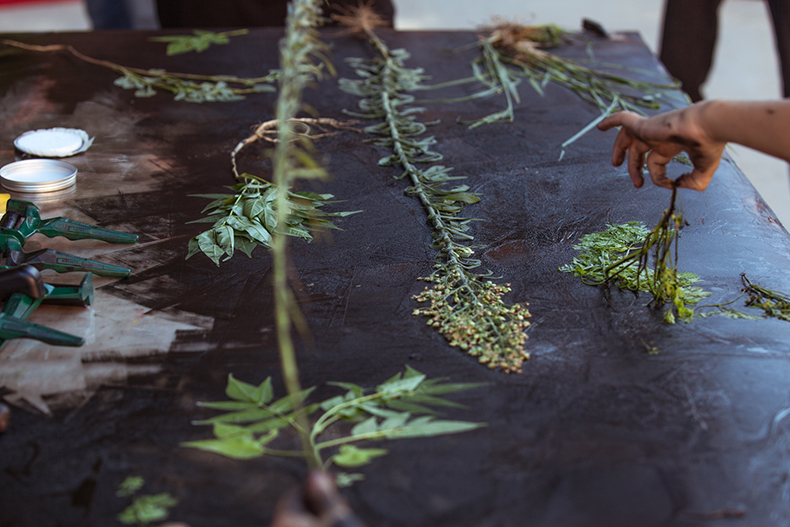
Photo: Dario Di Liberti
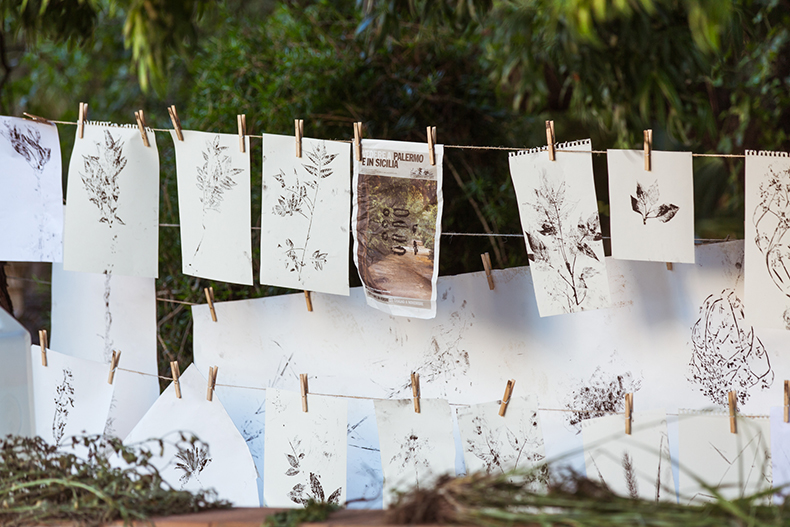
Photo: Dario Di Liberti
